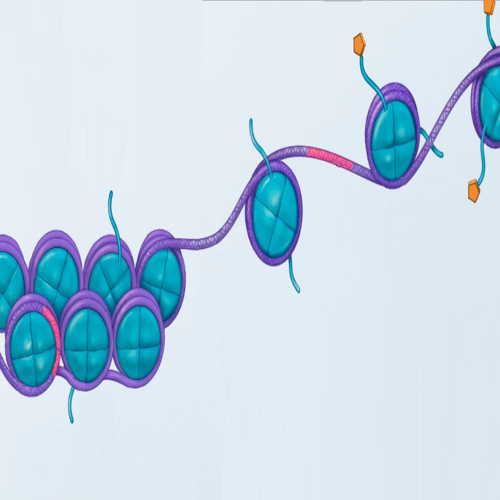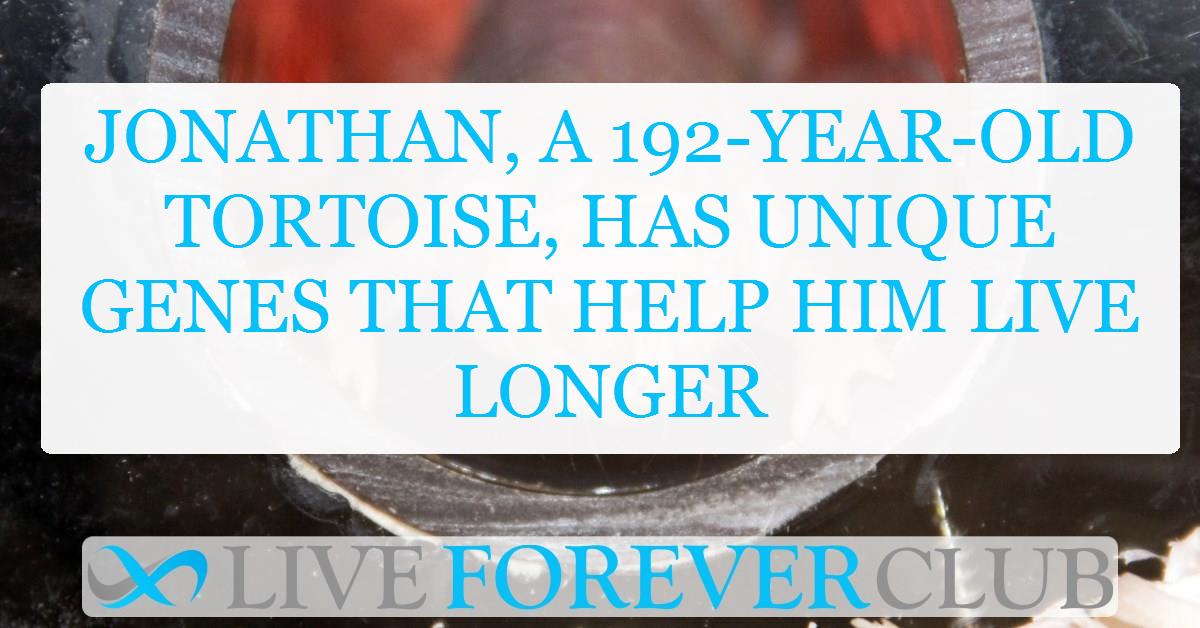Jonathan, an Aldabra giant tortoise, has been alive for nearly two centuries. He is believed to have hatched in 1832, making him the world’s oldest known land animal. His life has spanned historical events, technological revolutions, and scientific breakthroughs. Unlike most living creatures, his body has shown remarkable resilience to ageing, inspiring curiosity among researchers.
Scientists have long sought to understand why some species live significantly longer than others. While human lifespans have increased due to medicine and improved living conditions, some animals naturally outlive even the oldest people. Giant tortoises, bowhead whales, and naked mole rats exhibit unusual longevity, prompting researchers to study their genetics.
Recent advancements in genome sequencing have allowed scientists to examine Jonathan’s genetic code. By comparing his DNA with younger tortoises and other long-lived species, researchers have uncovered biological secrets that contribute to his extended lifespan. His genome and epigenome hold answers that could reshape the way we understand ageing.
Decoding the Genetic Blueprint of Longevity
Jonathan’s genome has undergone detailed sequencing to identify key factors responsible for his extraordinary lifespan. Scientists have found that he carries unique genetic variants linked to DNA repair, telomere maintenance, and cellular metabolism. These processes influence how cells age and determine how long an organism can live.
By comparing Jonathan’s DNA with other long-lived species such as the naked mole rat, bowhead whale, and Brandt’s bat, researchers identified common genetic patterns. Each of these species has evolved mechanisms to resist ageing-related diseases like cancer and neurodegeneration. Jonathan’s genes reveal similar adaptations that promote cellular stability over time.
Studies on other long-lived species provide context for Jonathan’s genetic profile. Bowhead whales have mutations in DNA repair pathways, while naked mole rats possess genes that protect against oxidative stress. Jonathan’s genome shows enrichment in pathways associated with these protective traits, offering strong evidence that longevity is influenced by a combination of genetics and environmental factors.
Role of DNA Repair in Ageing
One of the most significant findings from Jonathan’s genome is the presence of gene variants involved in DNA repair. Over time, DNA damage accumulates due to exposure to environmental stressors, metabolic processes, and natural ageing. Organisms that efficiently repair their DNA tend to live longer and maintain better health.
Jonathan’s genome contains positively selected genes such as POLE2, BARD1, and XRCC5, all of which play crucial roles in maintaining genomic integrity. These genes help correct errors in DNA replication and prevent harmful mutations from accumulating. Similar genetic adaptations have been found in other long-lived animals, reinforcing the idea that enhanced DNA repair is a key factor in longevity.
Another crucial discovery is the presence of POT1, a gene involved in telomere protection. Telomeres are the protective caps at the ends of chromosomes that shorten with age. In humans, telomere shortening is linked to cellular ageing and increased disease risk. Jonathan’s genetic makeup suggests that his telomeres may be more stable, reducing the effects of ageing at a molecular level.
Mitochondrial Function and Energy Production
Mitochondria are the powerhouses of cells, generating the energy needed for various biological functions. Over time, mitochondrial efficiency declines, leading to increased oxidative stress and cellular damage. In long-lived species, mitochondrial function remains well-regulated, minimizing energy loss and protecting cells from damage.
Jonathan’s genome reveals that genes involved in mitochondrial activity, including ALDH2, HIGD1A, and VPS13C, have undergone positive selection. These genes help maintain mitochondrial integrity and reduce the production of harmful reactive oxygen species.
Additionally, scientists found that genes associated with the electron transport chain, the process by which cells generate energy, exhibit low methylation entropy. This stability ensures that these genes continue functioning efficiently, contributing to Jonathan’s ability to sustain cellular energy production over nearly two centuries.
Epigenetic Clues to Longevity
Beyond genetics, epigenetics plays a critical role in ageing. Epigenetics refers to modifications in gene expression that occur without altering the DNA sequence. One of the most well-studied epigenetic changes is DNA methylation, a process that regulates gene activity.
Researchers compared Jonathan’s DNA methylation patterns with those of a five-year-old Aldabra tortoise. The findings showed a decline in global DNA methylation, a characteristic commonly associated with ageing. However, Jonathan’s methylome also exhibited unique patterns that may help counteract age-related decline.
One remarkable discovery was that genes involved in mitochondrial function were enriched in regions with low methylation entropy. This suggests that maintaining stable expression of these genes is crucial for longevity. In contrast, genes involved in developmental pathways exhibited increased methylation, a pattern observed in long-lived individuals across species.
Population Genetics and Evolutionary Adaptations
Jonathan’s genetic background also provides insights into his evolutionary origins. Scientists compared his genome with other Aldabra giant tortoises, including Tank, a 36-year-old tortoise living in captivity. The results indicated that Jonathan’s genetic profile is distinct from modern Aldabra populations.
His genome suggests a possible connection to an unknown genetic lineage. While most Aldabra tortoises can trace their ancestry to specific islands, Jonathan’s genetic markers suggest he may have originated from a different location. One theory is that he was removed from the Aldabra Atoll at an early age, making his genetic divergence more pronounced.
Comparative analysis with other long-lived tortoises, such as Lonesome George from the Galápagos, revealed shared longevity-associated variants. However, Jonathan also possesses unique mutations that are not present in other tortoises, further supporting the idea that his genome holds exceptional longevity-related traits.
Protecting Against Age-Related Diseases
Long-lived species often exhibit resistance to diseases that commonly affect ageing individuals, such as cancer and metabolic disorders. Jonathan’s genome shows an enrichment of genes involved in immune function, stress resistance, and metabolic regulation. These adaptations may help prevent the onset of age-related diseases.
One particularly interesting discovery is the expansion of the LAMTOR4 gene, which is part of a key cellular signaling complex. This gene has also been duplicated in long-lived animals such as the bowhead whale. Researchers suspect that this duplication may influence cell growth regulation and contribute to longevity.
Additionally, Jonathan carries gene variants that influence insulin regulation and oxidative stress response. These adaptations may help maintain metabolic stability and reduce cellular damage over time, allowing him to sustain a remarkably long life.
Implications for Human Ageing Research
The study of long-lived species provides valuable insights into ageing mechanisms that could be applied to human health. By understanding the genetic and epigenetic adaptations that allow Jonathan to live for nearly two centuries, scientists may discover potential interventions for extending human lifespan.
Research on DNA repair pathways, telomere stability, and mitochondrial function has already influenced ageing studies in humans. Drugs that target these pathways, such as those that enhance DNA repair or modulate mitochondrial efficiency, are being explored as potential anti-ageing therapies.
Jonathan’s unique genetic traits highlight the importance of preserving cellular stability over time. If similar mechanisms can be harnessed in humans, it may be possible to delay the onset of age-related diseases and improve overall healthspan.
In summary,
Jonathan’s extraordinary lifespan offers a glimpse into the biological secrets of longevity. His genome and epigenome reveal a complex interplay between DNA repair, mitochondrial function, and gene regulation. By maintaining cellular stability and minimizing age-related damage, he has defied the typical lifespan of his species.
Scientists continue to study Jonathan’s genetic adaptations, hoping to uncover new strategies for promoting longevity in humans. His legacy extends beyond his long life, serving as a living example of nature’s ability to unlock the mysteries of ageing. As research progresses, Jonathan’s story may inspire new approaches to understanding and extending life in the animal kingdom and beyond.
The study, led by Stephen Clark, was published in the journal BioRxiv.






